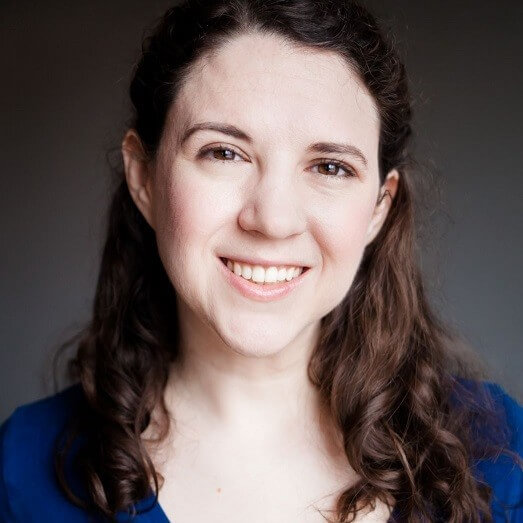When a new person joins your nonprofit’s email list, it’s a cause for celebration. Your marketing efforts are working! People are interested in your organization! But before you put on your party hat, take a minute to think: What exactly happens when someone joins your nonprofit’s email list? Do they get folded into your existing communication streams, or immediately start receiving appeals? If so, you’re missing an important step in their journey: welcoming them to your community with an email welcome series.
What Is the Purpose of An Email Welcome Series?
The email welcome series is an automated drip campaign that every new subscriber to your email list receives. It engages new supporters with your organization, informs them about how they can be more involved and shows them what to expect from you. It establishes the beginning of a warm and personal donor relationship.
The email welcome series provides a necessary bridge to regular communications. Without first getting to know your organization, your subscribers will quickly lose interest in your regular email communications. Supporters will have to “catch up” with your existing audience before they get the same benefits from your communications. An email welcome series can smooth the way, and make sure there aren’t any gaps in your new supporters’ understanding of what you do and why it matters.
What Makes An Email Welcome Series Work?
An email welcome series can take a subscriber’s interest from casual to committed, educate them about your work, and even help secure that coveted second gift from new donors.
You Connect When Donors Are Most Engaged
A welcome email series strikes while the iron is hot. Your supporters will never again be as excited about receiving emails as they are when they subscribe. It is perhaps the only moment in which they’re consciously thinking, “I really want to get emails from XYZ Organization! I want to know more!” Use automation to start your welcome series as soon as someone joins your email list.
Your welcome email is the first thing a new subscriber to your email list receives from you and statistics have shown that they’re interested in it. It’s more likely to make it to their inbox, where they’re more likely to open it than other kinds of emails from your organization. Don’t waste this opportunity with a generic “thanks for signing up” message.
Supporters sign up to receive your emails because they’re interested—keep that interest strong by sending an engaging message welcoming them to your organization. Share a video, picture, or story about the cause, while thanking them for their support.
You Promote Every Way To Be Involved
You can use your email welcome series to promote giving, but you have to offer your supporters more than that. Some may have just made a gift, and aren’t ready to be solicited again. Others haven’t given because they’re still getting to know you. Some folks will be more interested in giving their time.
Use your welcome series to introduce your supporters to all the ways they can be involved with your organization. Showcase volunteer opportunities, advocacy actions, in-kind donations, and board membership. Even inviting supporters to follow you on social media promotes greater involvement.
You Learn About Your New Supporters
Who are these people who sign up for your emails? What do they care about? Your email analytics will help you find out. As you observe which emails are opened and which links are clicked, patterns of interest will begin to emerge.
You can learn a lot from how your new supporters interact with your email welcome series. Use what you learn to respond to what your supporters actually want. Are your videos always clicked on? Consider adding more video to the series. If people sign up for your emails, but never open them, it’s time to experiment with your subject line. If they open them, but never click on your links, examine your call-to-action and storytelling.
5 Elements of A Great Email Welcome Series
A great email welcome series is timely, relevant, informative, and personal. It builds excitement and connection with supporters, and focuses on how they can become more involved with your nonprofit.
1. Timely
The series begins when someone new signs up for emails, and continues for about two weeks. Every expert has an opinion on the length and frequency of welcome campaigns, but in general, 4 to 7 emails over the course of two weeks will be right for most nonprofits.
However long your series, it’s best to leave a couple of days at the end before you add the new supporters to your existing communication streams. This ensures that they won’t receive multiple fundraising appeals in a short time frame or other confusing mixed messages.
2. Relevant
Your welcome email series is about providing value to your supporters right away, not promoting your organization. You want to prove to them that your community will add to their life in a meaningful way. But, if all you ever do is talk about the accomplishments of your organization and all that you do, people will disengage quickly. Instead, put your new subscribers at the center of your email welcome series—what they can do at your organization, opportunities to get more involved and how their support makes a difference. Tell inspiring stories that showcase their impact.
You can still educate them about your programs. You just have to do it through a lens of supporter-involvement. For example:
- Our craft studio gives refugee women professional skills they can use to help build new lives in the US.
- Calling all sewists, fiber artists, crafters, and marketers! Share your passion with refugee women, and help them gain professional skills to build their new lives. In the craft studio, volunteers share their skills, source supplies and find new markets for the products refugee women make, while making new friendships.
Both of these messages tell supporters that there is a craft studio that helps women gain professional skills. A is merely informative about the organization. B invites involvement and allows supporters to picture how they could help.
3. Informative
Give your new supporters a well-rounded picture of your organization. Your emails may all have one central message: “Welcome to our organization, you sure made the right call getting involved!” but you can tell many different stories to communicate it.
Along with all the ways supporters can be involved, talk about the mission, the problems they’re helping you solve and how your different programs contribute to the change you all want to see in the world. You can introduce your staff and clients, share stats or infographics and link to new studies on the issues you’re confronting.
Sharing a variety of information gives your supporters more potential points of connection with your organization. It makes it more likely for them to find something that speaks to them, which will inspire deeper engagement.
4. One Call to Action
Each email in your welcome series should have a purpose and invite supporters to take action. Unlike your nonprofit website, which should have several different calls to action (CTA), emails work best with a strong, single CTA.
Think about it as a journey—each step should take your supporters further along a single path, one step following another. Your supporters have already taken the first step by signing up for the emails. Decide which steps you want them to take next. You can invite them to connect with you on social media, watch a video, attend an event, read a blog post or give. You just can’t invite them to do all of it at once.
5. Personal
Your welcome email series will be automated, but that doesn’t mean it can’t be personal. The whole point is to acknowledge each individual who shows interest in what you’re doing, not treat them like they’re just another name on a list.
Most people know you’re not individually crafting and sending welcome emails. The problem arises when automation feels cold or robotic. You can avoid this by using a conversational tone in your emails, and using data merge fields to insert supporters’ names and other relevant personal data. You might also see great engagement by addressing the fact that you don’t know much about your new subscriber, yet. Use the welcome email series as a way to open the conversation up so they can tell you more about their interests and motivations. Include surveys or links that subscribers can click to show their preferences. Each email in your series should reveal something new to you about your new supporter.
One last detail on using email to build personal connections with your supporters— make sure each email has a real-person sender. It’s hard to form a relationship with “[email protected].” Start introducing the people at your organization, as well as your programs, and supporters will feel more in touch with your day-to-day operations.
A Sample Nonprofit Welcome Email Series
So what do all these practices look like in action? The answer will be slightly different for every nonprofit, but here’s an example:
Day 0 – Email 1
Theme: Welcome!
Content: Thank you photo of team
Learning Opportunity: What interests them?
CTA: Tell us more!
Day 1 – Email 2
Theme: Introducing our community
Content: Nonprofit impact video
Learning Opportunity: How do they want to be involved?
CTA: See our initiatives
Day 3 – Email 3
Theme: Ways to help
Content: Volunteer Opportunities/Program info
Learning Opportunity: Are they ready to commit?
CTA: Get involved!
Day 4 – Email 4
Theme: Get all our info
Content: Link to social media feeds
Learning Opportunity: Where are they active online?
CTA: Follow us!
Day 7 – Email 5
Theme: Learn more
Content: Infographic about the cause
Learning Opportunity: What do they already know about your cause?
CTA: Complete our quiz!
Day 9 – Email 6
Theme: Giving
Content: Appeal for donation
Learning Opportunity: Are they ready to give?
CTA: Make a Donation
After each person has completed the email welcome series, add them to your newsletter list and any other lists that are targeted to the interests they expressed during the welcome series.
Learn More About Nonprofit Email Best Practices
Your welcome email series sets the tone for the rest of your communications. With Virtuous, it’s simple to build and automate a drip campaign that engages your donors without draining your time. Ready to start welcoming donors and engaging with email? Don’t skip The Ultimate Guide To Nonprofit Marketing Automation!




